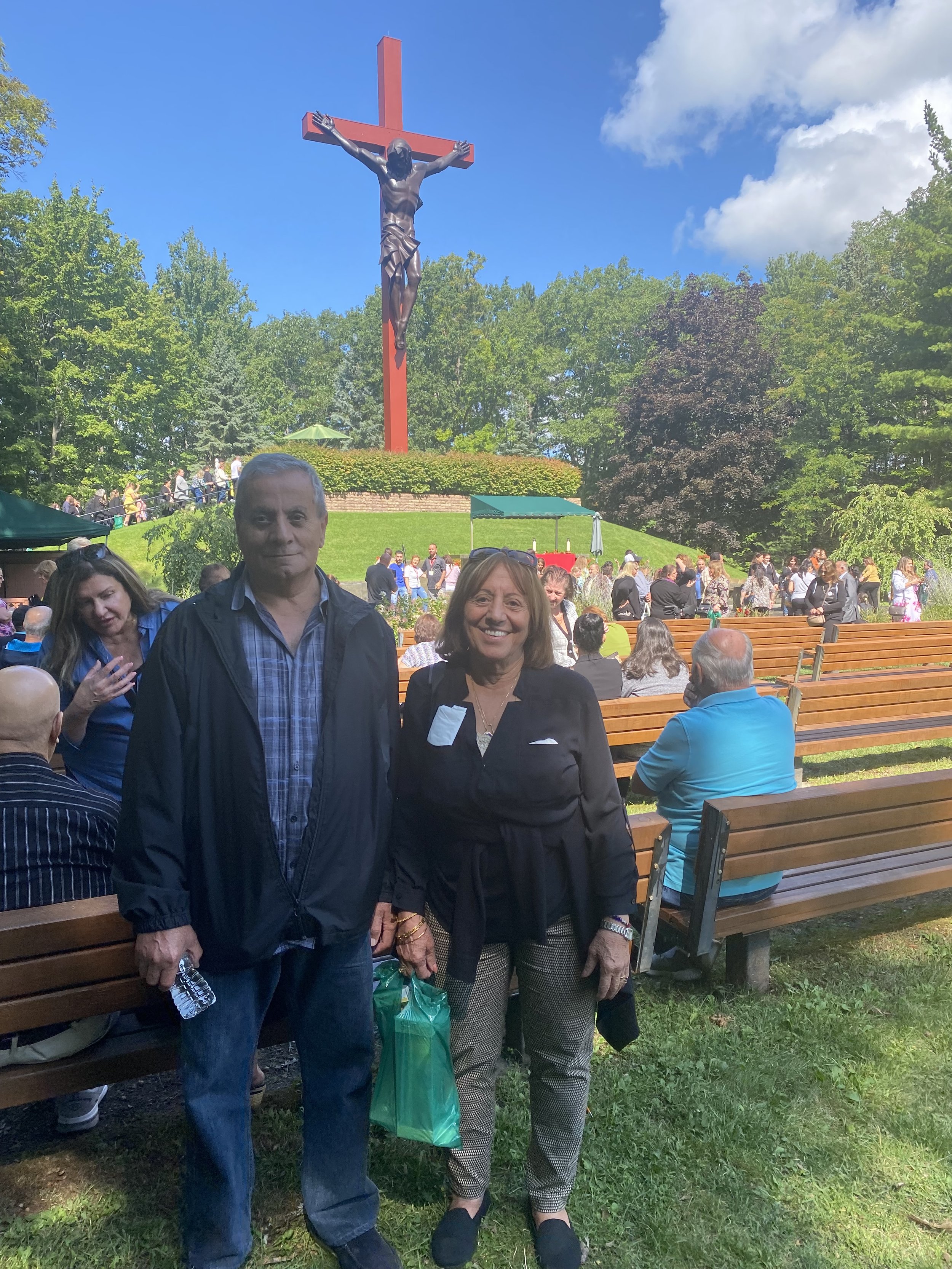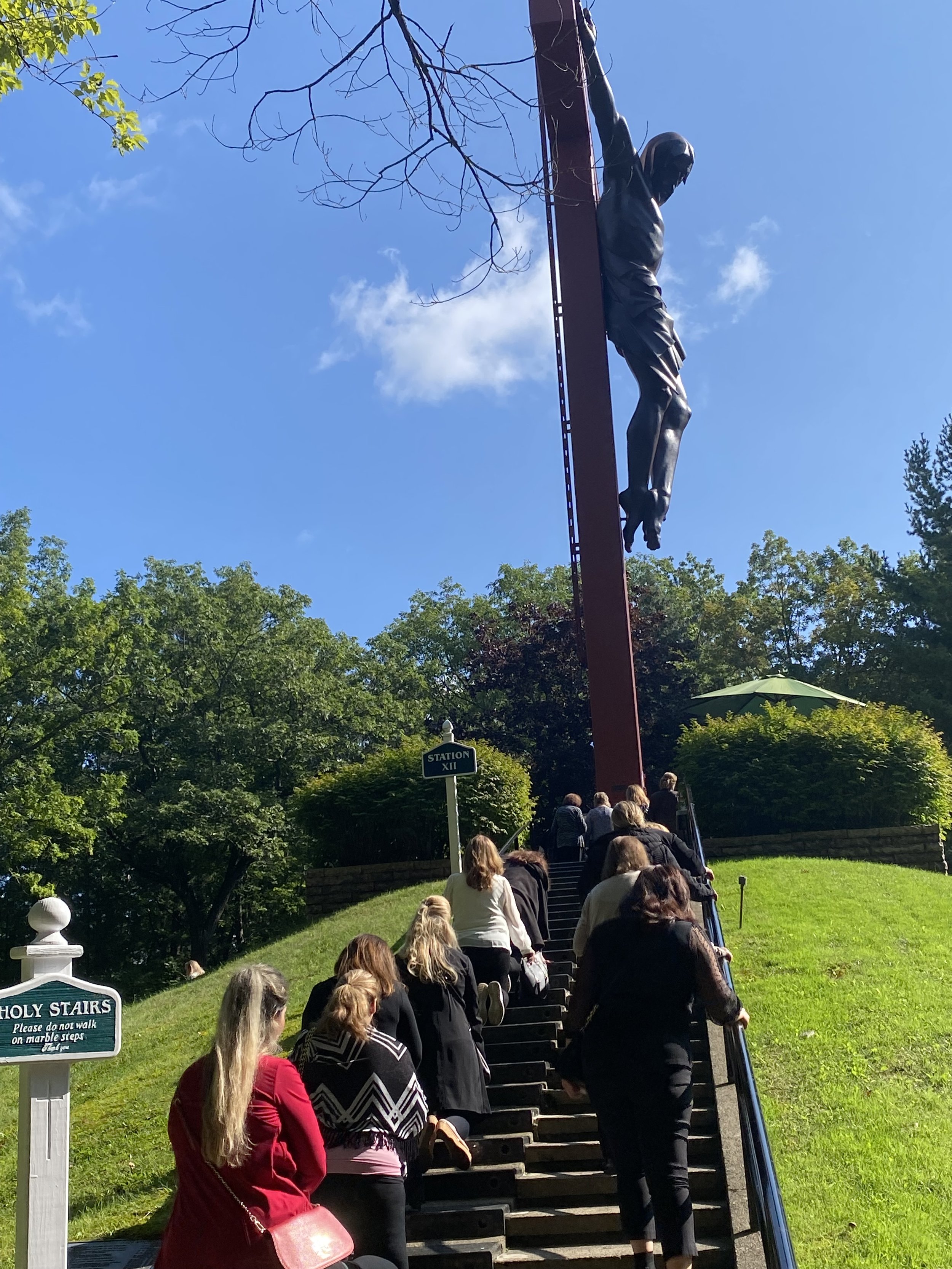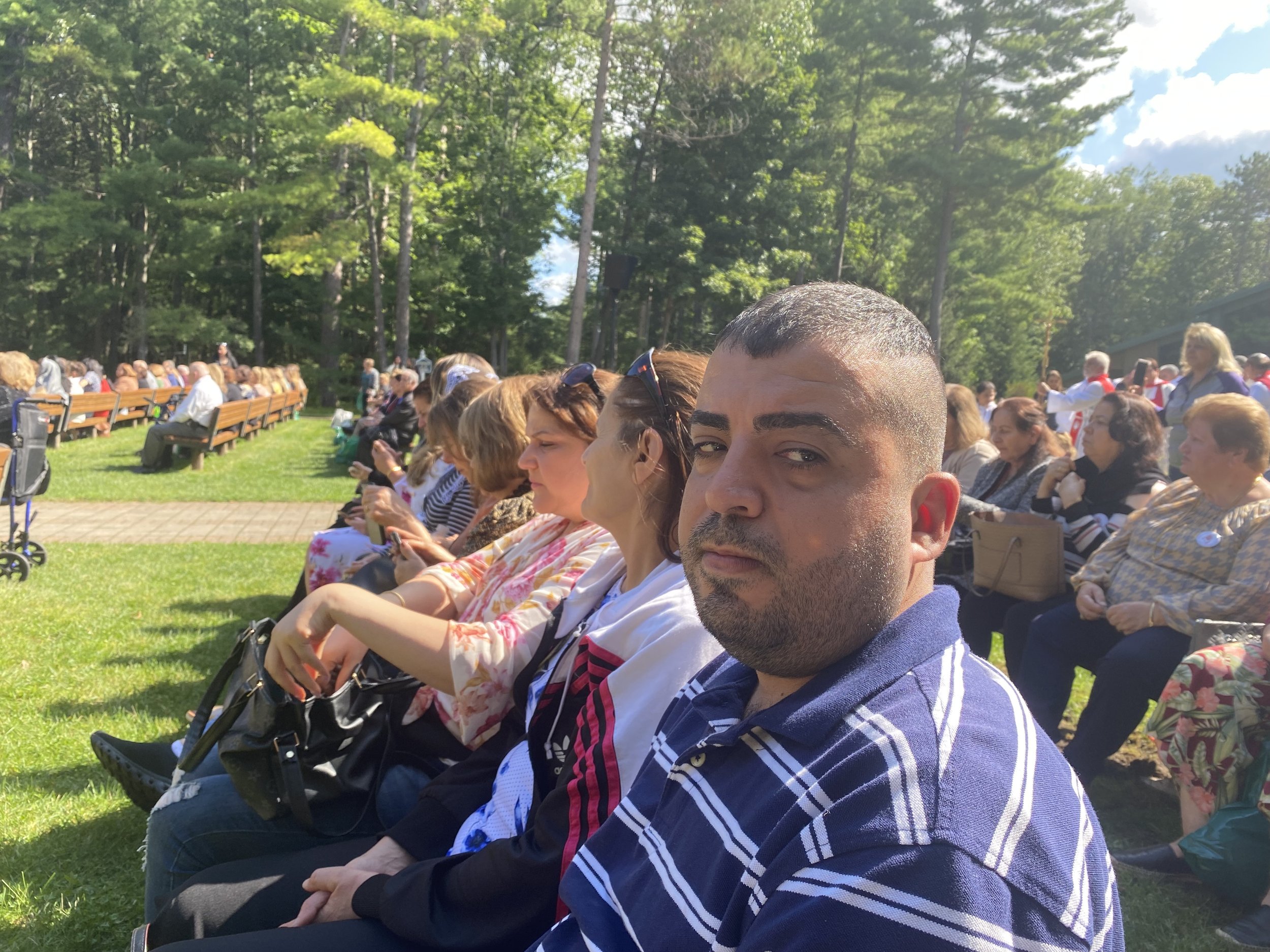The Cross in the Woods
Chaldeans make their annual pilgrimage to a special shrine in Indian River, Michigan





By Weam Namou
September 14 has become known as “Chaldean Day” at the National Shrine of the Cross in the Woods in Indian River, Michigan. For roughly 30 years, crowds of Chaldeans have headed to the shrine on that day to celebrate Holy Cross Day.
They arrive in the morning to this little town that has a population of around 2,000. Prior to the Chaldean Mass at noon, they walk the quiet and peaceful grounds, visiting the Stations of the Cross which are laid out across the wooded area. They observe the 55-foot-tall outdoor crucifix and climb the Holy Stairs leading up to the base of the Cross.
“I’ve been coming here with my family for the last ten years,” said Saad Marrugi. “We came here even during the coronavirus when there was no Mass. We’ll come even if there’s a war.”
Holy Cross Day, known by several other names including Exaltation of the Holy Cross, commemorates the recovery of the Cross on which Jesus was crucified. Tradition has it that the Cross was taken from Jerusalem by the Persians during a war in 614 A.D. and that Queen Helena, mother of the Roman emperor Constantine, found it during her pilgrimage to the Holy Land around 326 B.C. She then built the Basilica of the Holy Sepulchre and was later venerated a saint.
“The best thing here is that you think about the Cross of Jesus,” said Helen Arafat. “And I love Queen Helena because that’s my name. I’m also Queen Helena!” she added, laughing.
Helen has been coming every year since 1996, except for the two years during the pandemic. She sometimes came with a group on a bus, and sometimes drove alone with her husband.
This year, a dozen buses arrived, each carrying 56 passengers. Sue Zoma has been bringing people in buses for 8 years. “Usually, we stay the night on Mackinac Island, but this time, we’re going home on the same day.” Zoma provides this service because she likes to help people get there who don’t have a car or a ride.
About one thousand Chaldeans gathered this year on a sunny day in the outdoor church. Nawar Gattah has been going there for 20 years and he has noticed that the number of attendees keeps increasing.
Prior to Mass, Samira Choulagh, who also has a history of bringing groups to this site by bus, recited beautiful prayers and hymns in Arabic and Sureth. Then a procession of clergymen walked toward the altar, including Father Boji and Father Fadi Philip, who celebrated the Mass.
The air was filled with the scent of incense, the sound of birds chirping, and church bells ringing.
The shrine traces its origins back to 1946, when Father Charles D. Brophy was named administrator of a new Catholic parish in the area. While driving, he noticed the beautiful woods on the side of the road and thought of the life of Kateri Tekakwitha. She was a Native American from the Mohawk tribe who converted to Christianity in the seventeenth century. She was known for making small wooden crosses and placing them in the woods to inspire people to stop and pray.
Under Brophy’s leadership, the parish decided to build both a church and an outdoor gathering area that could accommodate the many individuals who visit in the summer. Today between 275,000 and 325,000 people come to visit the Cross in the Woods every year.
In 1954, a 55-foot wooden cross was erected. Five years later, a bronze image of the crucified Jesus, sculpted by Marshall Fredericks, was lifted into place. At the center of the outdoor worship area is a statue of Kateri Tekakwitha, dedicated to Father Brophy. Kateri was canonized in 2012 and was the first Native American woman to become a saint.
After Mass is celebrated this year, people remained on the grounds to chat, stroll around to see the smaller shrines on the ground, and to visit the Doll Museum that has the largest collection of dolls dressed in traditional attire of men and women in religious communities in the United States. In 1964, Wally and Sally Rogalski donated the dolls with the request “that no admission charge would ever be asked, so that people, rich and poor alike, would be able to see them.”
The National Shrine of the Cross in the Woods is for everyone, but it holds a special place in the hearts of Chaldeans.
